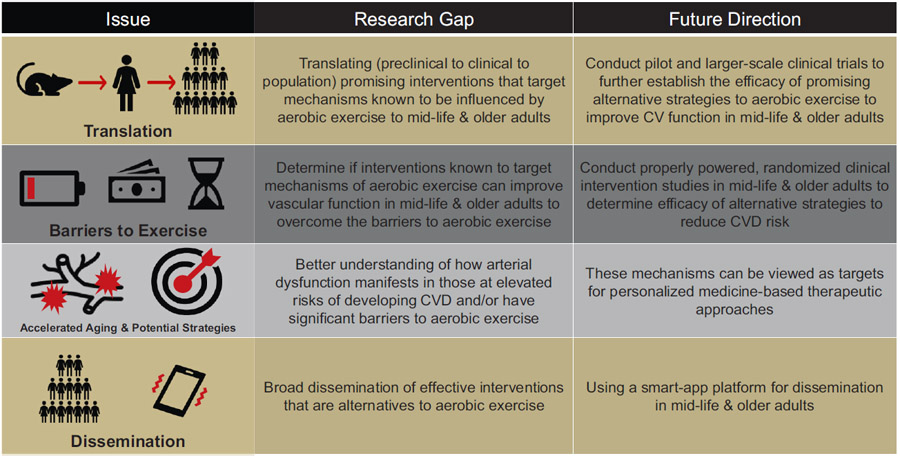Table 1.
Potential strategies, research gaps, and future directions to overcome traditional barriers to exercise to reduce cardiovascular disease risk.

|
Although there has been extensive research on the effects of aerobic exercise on healthy cardiovascular (CV) aging, several important gaps remain to explore alternative strategies to overcome traditional barriers to aerobic exercise in groups that are vulnerable to CV diseases (CVD). These include, but are not limited to: 1) translating new and effective “exercise-inspired” interventions; 2) conducting intervention studies to establish the efficacy for alternative strategies to exercise to improve arterial function and reduce CVD risk in mid-life & older adults; 3) identifying key mechanisms of CV aging in populations that exhibit increased risk for CVD; and 4) disseminating effective implementation strategies for CV-targeted interventions to improve public health outcomes.
